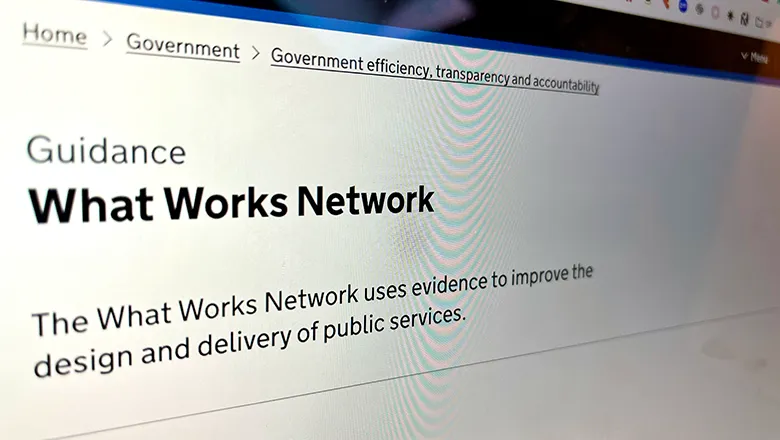08 May 2025
Reducing policy failure means addressing policy implementation
Jane Lewis and Robyn Mildon
Services, interventions and approaches that are of proven effectiveness are not being taken up at scale

This is the sixth instalment of the School for Government’s comment series on the future of evidence-based policy. Look out for more contributions to the series in the coming weeks.
When policies fail, it's generally either because of bad policy, bad implementation, or bad luck. Evidence-based policymaking and the what works centres are helping to reduce the scope for bad policy. There's not a lot we can do about genuine bad luck when policy is derailed by pandemic, natural disaster or social or political upheaval. So we need to look to improving policy implementation for marginal gains and for the great leap forward that is embodied in the government's five missions.
Across policy areas, we don't see the services, interventions and approaches that are of proven effectiveness being taken up, embedded and sustained at scale. This is implementation failure – a gap between what we know works, and what we see delivered in practice. It's there in every policy area, and it's profound. Even in healthcare, which on the whole is better set up for translational work from research to practice, it takes on average 17 years for a paltry 14% of proved interventions to be taken up widely – which means a whole generation missing out.
Getting implementation right means paying attention to the interaction between policy content and the implementation infrastructure – identifying where they are well-aligned, with values, expectations, practice and systems that can be leveraged to support implementation, and where misalignment needs to be addressed. Our 2023 work on implementation-minded policymaking with the Wales Centre for Public Policy introduces a framework on how to address the policy-implementation gap that focuses on this interaction, and what can be done to ensure alignment of policy content and implementation context.
Like other forms of infrastructure, the infrastructure for implementation tends not to be visible. We don't see what’s holding a house up, although we'd soon know if it wasn't there. In social policy areas, the implementation infrastructure is a fragmented set of institutions, professions, organisations, networks and individuals. Identifying the implementation infrastructure is an important first step to leveraging, equipping, resourcing and marshalling it in the work of implementation.
The science of implementation is advancing fast, and we know a lot about what good implementation takes, how to assess the barriers and potential facilitators, and the implementation strategies needed to overcome barriers and leverage facilitators. We know that it's deeply collaborative work, that strategies like setting up and aligning implementation teams are effective, and that planning, coordinating and monitoring implementation are essential.
We also know we need to do more to build the capacity of teams on the ground to use the evidence about effective implementation in their work, developing the skills and competencies involved, and building a new cadre of implementation experts across professions.
We also need to test the effectiveness of different implementation strategies and in particular to assess “How low can you go?” – what is the least amount of implementation support that will get enough of the system working well enough to create meaningful change?
There is scope to use experimental approaches here, including ”SMART” trials where sites or participants are randomised to different sets of implementation strategies, and the laggers randomised again with some receiving further support, to see what it takes to get change working, embedded and sustained on the ground. This implementation-centred approach has been used, for example, in an evaluation of a cognitive behavioural therapy intervention in high schools.
We need to expand the work of what works centres and evidence-based policy initiatives to engage with the messy but essential business of implementation. It's here that we have real potential to make mission-based government work – and to see it land socially significant change, sustainably and fast.
Jane Lewis is Associate Director, and Robyn Mildon is Chief Executive Officer, of the Centre for Evidence and Implementation.
